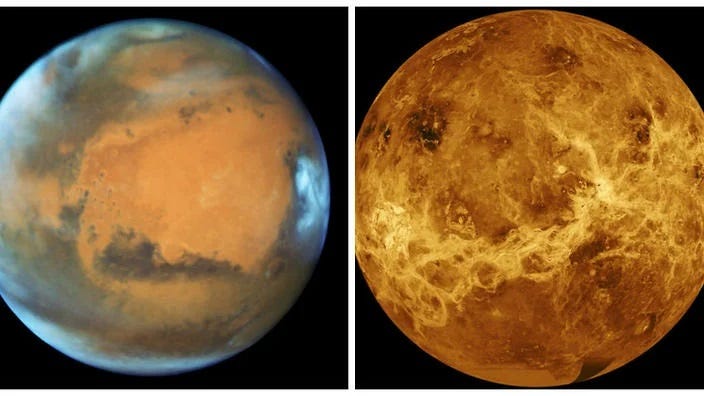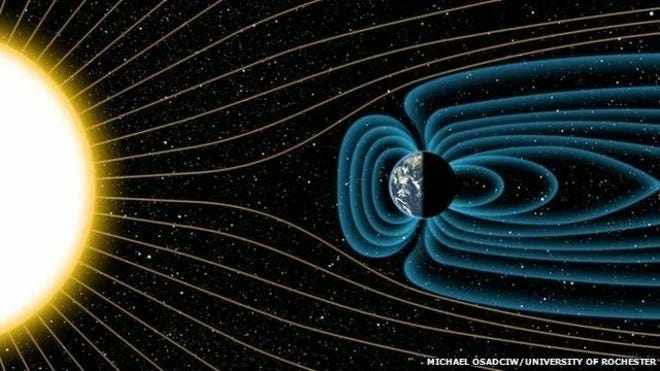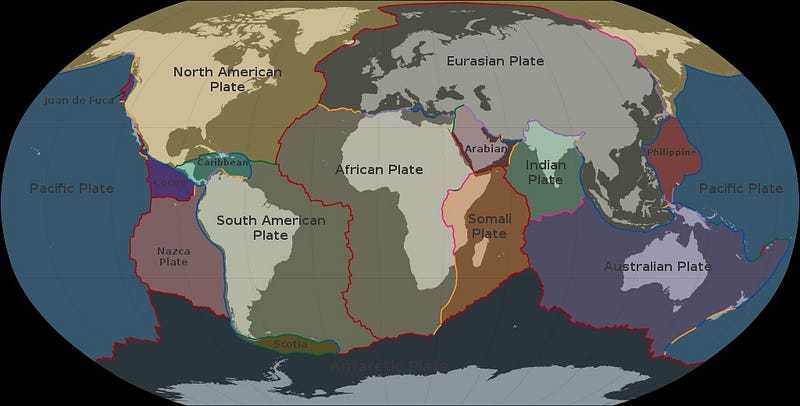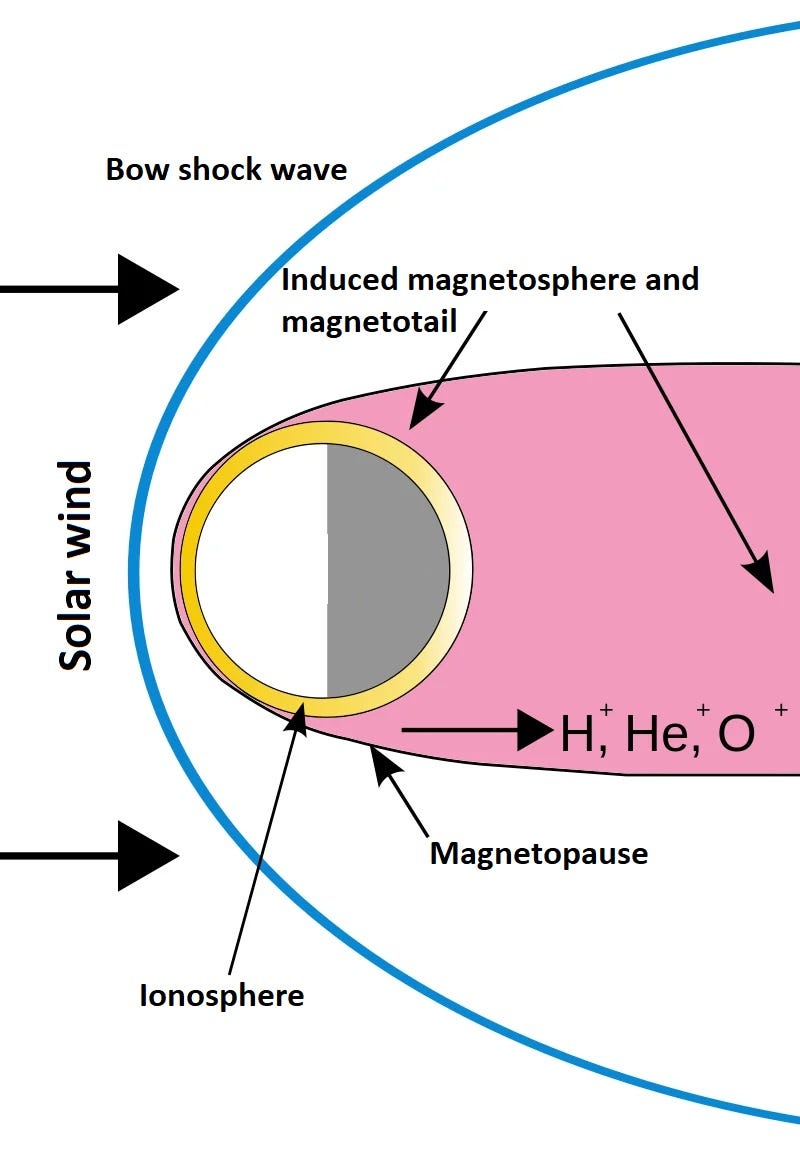Why Venus Retains Its Atmosphere While Mars Loses Its
Written on
Understanding Venus and Mars
Venus and Mars are the two planets in our solar system that orbit closest to Earth, making them prime candidates for future exploration and potential colonization. A critical aspect of evaluating a planet's habitability is its atmospheric characteristics. When comparing Venus and Mars, a stark contrast emerges: the atmospheric pressure on Mars is approximately 170 times lower than Earth's, whereas Venus boasts an atmospheric pressure 92 times greater than that of our planet.

Examining Atmospheric Retention
The prevailing theory is that Mars lost its atmosphere due to its lack of a magnetic field. This leads us to an intriguing question: why does Venus, which also has a weak magnetic field, maintain such a thick atmosphere? What accounts for the differences in atmospheric retention between these two planets despite their similar conditions? Let’s explore these questions further.
The Mechanisms of Atmospheric Loss
Current scientific thought identifies two primary mechanisms for atmospheric loss in planets. The first is thermal loss, which occurs when gas molecules in the upper layers of a planet’s atmosphere gain enough energy to escape gravitational pull and venture into space.

This process can have a significant impact on smaller or hotter planets, while larger gas giants or colder planets are less affected. The second mechanism is non-thermal loss, which is primarily driven by solar wind. The solar wind is a continuous stream of ionized particles released from the Sun, traveling at speeds of 300 to 1200 km/s. These particles can collide with atmospheric gas molecules, effectively pushing them out into space.

The Role of Magnetic Fields
A planet's magnetic field serves as a crucial barrier against solar wind. It deflects ionized particles, preventing them from penetrating the atmosphere except in limited polar regions. Understanding why some planets lack effective magnetic fields can shed light on their atmospheric conditions.
The strength of a planet's dipole magnetic field is thought to be influenced by factors such as the precession of its rotational axis and rotational speed. For Venus, these factors are minimal, resulting in a magnetic field that is weaker than theoretical predictions. Another theory suggests that the absence of convective currents in a planet's iron core, often linked to a lack of plate tectonics, can lead to the disappearance of its magnetic field.

Mars likely lacks a hot, spinning core, while Venus’s insufficient plate tectonics may stem from its extreme dryness, which inhibits the movement of tectonic plates. Furthermore, the intense heat on Venus may prevent its crust from solidifying, hindering plate formation and increasing volcanism, which in turn affects the core's convection.
How Venus Retains Its Atmosphere
Despite having a weak intrinsic magnetic field incapable of shielding its atmosphere from solar wind, Venus benefits from an induced magnetic field created by the solar wind itself.

When solar wind interacts with Venus’s dense atmosphere, it cannot penetrate deeply due to the high density of the gases present. The interaction ionizes the upper layers of the atmosphere, generating an electric current that creates an induced magnetosphere.

This induced magnetosphere consists of several components: the bow shock, magnetosheath, magnetopause, and magnetotail, all contributing to a magnetic field that can reach 40 nT. This strength is sufficient to protect most of the atmosphere from the solar wind's onslaught.
In conclusion, Venus retains its atmosphere primarily due to its mass and dense atmosphere, which helps generate a protective magnetic field in response to solar wind. While some atmospheric loss does occur, it is minimal.
If you're interested in more articles about space, feel free to clap and let us know!
Subscribe to our channel for updates, and feel free to ask any questions for future articles. If you appreciate my work, consider supporting me by becoming a member of Medium for just $5 a month, helping us produce even better content.